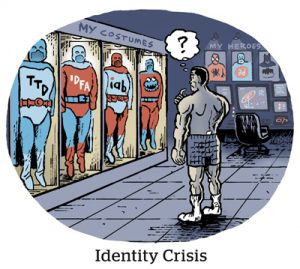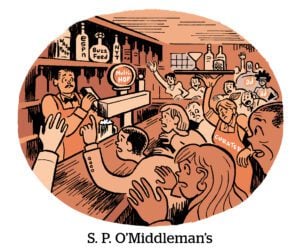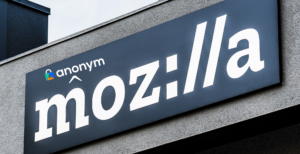Once upon a time, ads didn’t change. They didn’t consider data inputs like a customer’s location, device, day of the week and time of day, weather conditions, search history and prior website interactions.
Then dynamic creative optimization (DCO) came along. Easily paired with programmatic advertising technology, it automatically creates, iterates on and optimizes personalized ads in real time.
DCO uses behavioral, demographic, psychographic and other consumer data to generate dozens, hundreds or thousands of variations of ad creative. Throughout a campaign, machine-learning algorithms continually adjust ad creatives based on customer engagement with different versions. As the tech serves and tests a variety of creative combinations, it hoovers up data about how the ads are performing, which clients can use to inform future ad campaigns.
DCO has been around for a long time, but it’s still popular with marketers. It has evolved over the past few years to incorporate generative AI. And although upcoming signal loss may challenge all the ways advertisers can optimize their ads, creative remains a key lever that brands can pull to improve performance.
How DCO works
Even simple ad campaigns run on multiple channels and target multiple audiences, according to Oz Etzioni, co-founder and CEO of omnichannel creative ad tech provider Clinch. Rotating between a few creatives depending on time of day might require dozens or hundreds of versions. DCO can make this complex, time-consuming, labor-intensive and error-prone process more efficient.
To operate DCO tech, advertisers build their ad creative out of interchangeable components. Since creatives are modular, users see constantly changing combinations of headlines, subheadings, images, prices, logos, calls to action and other ad elements.
Testing-wise, DCO tends to use A/B/n and multivariate testing because the number of variations is so high compared to what an A/B test can capture.
Rather than testing two versions, A/B/n testing allows for n number of variants that each test one ad element. For example, variant A might use a blue color scheme, variant B a red color scheme, variant C a black-and-white color scheme and variant D a sepia color scheme. Or variant B might test a different hue, while variant C tests a different headline and variant D tests a different image. Multivariate testing tests different combinations of individual elements within each ad variation. So a single ad variation might test a different call to action, headline and background all at once.
Since an algorithm determines the best way to piece these elements together for an audience based on the results of this testing, the process can be “black ops and quite mysterious in terms of what [creative] is actually performing” or why a particular creative is performing particularly well, said Nick Graham, a senior consultant at digital marketing consultancy Kepler EMEA. But advertisers can ask their DCO platform to share additional analysis and insights.
The evolution of DCO
Over time, digital creative formats have become more “formulaic,” Graham said, which makes an automated, algorithm-driven approach to planning and deploying campaigns more appealing. Take Google’s or Meta’s preferred ad formats, for instance, to which advertisers must conform. As the creative’s headline, image and text became more standardized across the open web and walled gardens, “the different variables could easily be taken out and pushed back in to ensure that you have the right frame size or character limits,” he said.
DCO previously had a more human touch, and some companies still take an old-school approach to developing creatives and optimizing them manually through A/B or A/B/n testing instead of using DCO tech, Graham said.
With a more manual, human-driven form of DCO, advertisers can pinpoint which creative is performing best for an audience and better understand which products, services or promotions to deliver, Graham said. It’s less of a black box than DCO tech. But DCO tech drives short-term performance because machine learning is solely optimizing for results. It doesn’t rely on “gut intuition” about what’s working or not working.
AI tools can “pick apart relationships and correlations that humans don’t necessarily see between customers and the different outputs of the creative,” Graham said. Instead of just testing parts of an ad, they are optimizing based on customer attributes as well. AI can then isolate the variables most likely to deliver on the advertiser’s goals and change the creative accordingly.
And thanks to the advent of generative AI technology, advertisers can outsource tasks such as writing copy, inserting images or modifying backgrounds to AI tools, enabling creative production at massive scale – which, in turn, creates more options to test.
Sometimes brands resort to A/B testing (with just two options) because they don’t have time to come up with “a multitude of different pieces of copy” and image options, said Kevin Wang, chief product officer of customer engagement platform Braze.
Generative AI is helpful because it speeds up the composition process so brands can explore a variety of ideas – though Braze usually recommends 10-15 variants, Wang said. Marketers can still review the creative before it goes out.
Where DCO is going
To remain viable, DCO will have to contend with signal loss. As third-party cookies deprecate in Chrome and other signals, such as IP addresses and mobile device IDs, falter, brands will have a harder time identifying and segmenting audiences and measuring results, Graham said.
To serve DCO ads effectively in the future, vendors will need to have connections to both the buy side and the sell side, Graham said. That way, they can benefit from the closed-circuit measurement loops that enable DCO.
Marketers who want to use DCO will benefit from using companies that have more parts of an ad tech stack. Marketing automation platforms like Mediaocean’s Flashtalking and Adform, which have an ad server and a persistent ID across devices, will still see the effects of third-party cookie deprecation, Graham said. But they can see where an ad has been served, which users it’s been served to, which creatives to send to those users and which ads have been delivered. And the best-positioned companies of all to serve DCO ads after signal loss may be walled gardens like Google, Meta and Amazon because of their vast data holdings.
It doesn’t hurt to look at different DCO platforms to see if they can deliver across the open web, Graham said, such as display, apps and mobile browsers. “It’s worth understanding the limitations that these companies have,” he said, sussing out how transparent they are about measurement as well as their plans for the next year.
“As a brand or advertiser, if you are delving into DCO, you need to ask yourself: Is it for the insights or the short-term performance?” Graham said. If it’s both, advertisers should develop a strategy that combines human decision-making with machine-led optimization. But they should have a deep awareness of the processes to know the answer to this question: “Where does human begin, and where does machine learning take over?”
















